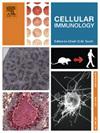Apelin-13 enhances neurofunctional recovery and suppresses neuroinflammation via the SIRT1/NF-κB axis in ischemic stroke
IF 2.9
4区 医学
Q2 CELL BIOLOGY
引用次数: 0
Abstract
Background
Ischemic stroke is a major cause of mortality and disability, with neuroinflammation driving secondary brain injury. Microglial activation contributes to neuronal apoptosis, BBB disruption, and prolonged neurological deficits. Apelin-13, an endogenous peptide, has demonstrated neuroprotective potential, but its precise mechanisms remain unclear. This study investigates how Apelin-13 modulates neuroinflammation and the molecular pathways involved in ischemic stroke.
Methods
Mice underwent middle cerebral artery occlusion-reperfusion (MCAO/R) to model ischemic stroke, followed by Apelin-13 administration. Neurological function was assessed using Garcia scoring, adhesive removal, rotarod, and grid-walking tests. Infarct volume was quantified via TTC staining, and MRI evaluated cerebral edema. Immunofluorescence staining and Western blotting were used to assess neuronal apoptosis and BBB integrity. Microglial activation and polarization were analyzed via Iba1 co-immunostaining with CD16 (pro-inflammatory) and Arg1 (anti-inflammatory) markers. In vitro, primary microglia and BV2 cells were exposed to oxygen-glucose deprivation (OGD) to mimic ischemia, and Apelin-13's effects on inflammatory signaling were examined. The role of the SIRT1/NF-κB axis was evaluated using the SIRT1 inhibitor EX-527.
Results
Apelin-13 significantly improved post-stroke neurological function, reduced infarct volume, and alleviated cerebral edema. It preserved BBB integrity by reducing vascular leakage and albumin extravasation and suppressed neuronal apoptosis by downregulating cleaved caspase-3. Apelin-13 also mitigated neuroinflammation by decreasing microglial activation and shifting polarization toward an anti-inflammatory phenotype, as evidenced by reduced CD16+ and increased Arg1+ microglia. In vitro, Apelin-13 suppressed OGD-induced pro-inflammatory cytokine release while promoting anti-inflammatory responses. Mechanistically, Apelin-13 upregulated SIRT1, inhibiting NF-κB signaling and reducing inflammatory mediator expression. SIRT1 inhibition with EX-527 reversed these effects, restoring NF-κB activation and pro-inflammatory microglial polarization.
Conclusions
Apelin-13 exerts neuroprotective effects in ischemic stroke by preserving BBB integrity, reducing neuronal apoptosis, and suppressing neuroinflammation. These effects are mediated through SIRT1 activation and NF-κB inhibition. Targeting the Apelin-13/SIRT1/NF-κB axis may offer a promising therapeutic strategy for mitigating neuroinflammation and improving stroke recovery.
Apelin-13通过SIRT1/NF-κB轴促进缺血性脑卒中的神经功能恢复和抑制神经炎症
背景:非化学性脑卒中是导致死亡和残疾的主要原因,神经炎症导致继发性脑损伤。小胶质细胞激活导致神经元凋亡、血脑屏障破坏和延长神经功能缺损。Apelin-13是一种内源性肽,已显示出神经保护潜力,但其确切机制尚不清楚。本研究探讨Apelin-13如何调节缺血性脑卒中的神经炎症和分子通路。方法采用大脑中动脉闭塞-再灌注(MCAO/R)模拟缺血性脑卒中,然后给予Apelin-13。神经功能评估采用加西亚评分法、黏附去除法、旋转棒法和网格行走法。通过TTC染色定量梗死体积,MRI评估脑水肿。免疫荧光染色和Western blotting检测神经元凋亡和血脑屏障完整性。通过Iba1与CD16(促炎)和Arg1(抗炎)标记物共免疫染色分析小胶质细胞的激活和极化。在体外,将原代小胶质细胞和BV2细胞暴露于氧糖剥夺(OGD)以模拟缺血,并检测Apelin-13对炎症信号传导的影响。使用SIRT1抑制剂EX-527评估SIRT1/NF-κB轴的作用。结果apelin -13明显改善脑卒中后神经功能,减少梗死面积,减轻脑水肿。它通过减少血管渗漏和白蛋白外渗来保持血脑屏障的完整性,并通过下调裂解caspase-3来抑制神经元凋亡。Apelin-13还通过降低小胶质细胞的激活和向抗炎表型转移极化来减轻神经炎症,这可以通过减少CD16+和增加Arg1+小胶质细胞来证明。在体外,Apelin-13抑制ogd诱导的促炎细胞因子释放,同时促进抗炎反应。机制上,Apelin-13上调SIRT1,抑制NF-κB信号传导,降低炎症介质表达。用EX-527抑制SIRT1逆转了这些作用,恢复了NF-κB活化和促炎小胶质细胞极化。结论sapelin -13在缺血性脑卒中中具有保护血脑屏障完整性、减少神经元凋亡、抑制神经炎症等神经保护作用。这些作用是通过SIRT1激活和NF-κB抑制介导的。靶向Apelin-13/SIRT1/NF-κB轴可能为减轻神经炎症和改善脑卒中恢复提供了一种有希望的治疗策略。
本文章由计算机程序翻译,如有差异,请以英文原文为准。
求助全文
约1分钟内获得全文
求助全文
来源期刊

Cellular immunology
生物-免疫学
CiteScore
8.20
自引率
2.30%
发文量
102
审稿时长
30 days
期刊介绍:
Cellular Immunology publishes original investigations concerned with the immunological activities of cells in experimental or clinical situations. The scope of the journal encompasses the broad area of in vitro and in vivo studies of cellular immune responses. Purely clinical descriptive studies are not considered.
Research Areas include:
• Antigen receptor sites
• Autoimmunity
• Delayed-type hypersensitivity or cellular immunity
• Immunologic deficiency states and their reconstitution
• Immunologic surveillance and tumor immunity
• Immunomodulation
• Immunotherapy
• Lymphokines and cytokines
• Nonantibody immunity
• Parasite immunology
• Resistance to intracellular microbial and viral infection
• Thymus and lymphocyte immunobiology
• Transplantation immunology
• Tumor immunity.
 求助内容:
求助内容: 应助结果提醒方式:
应助结果提醒方式:


